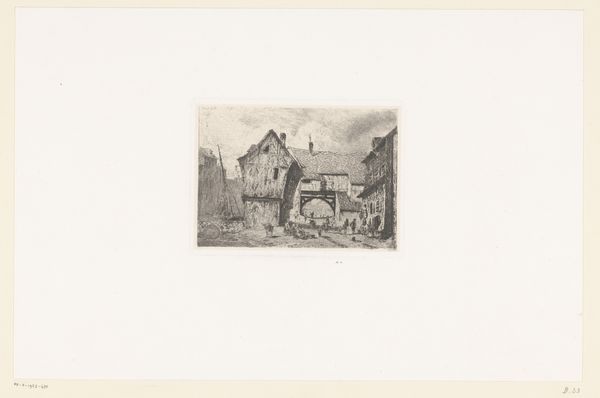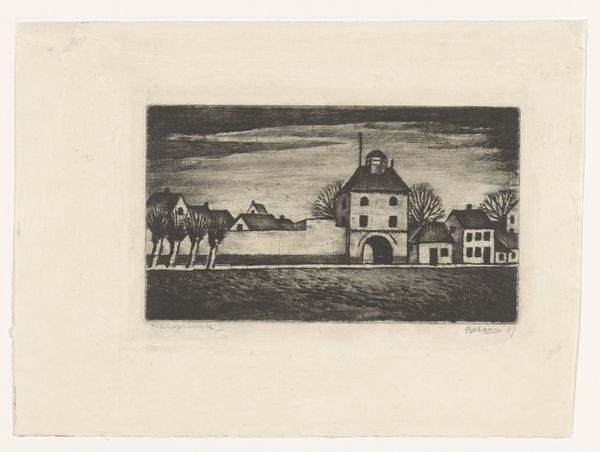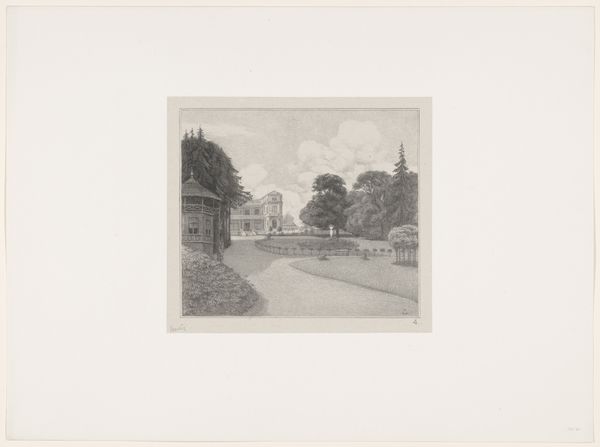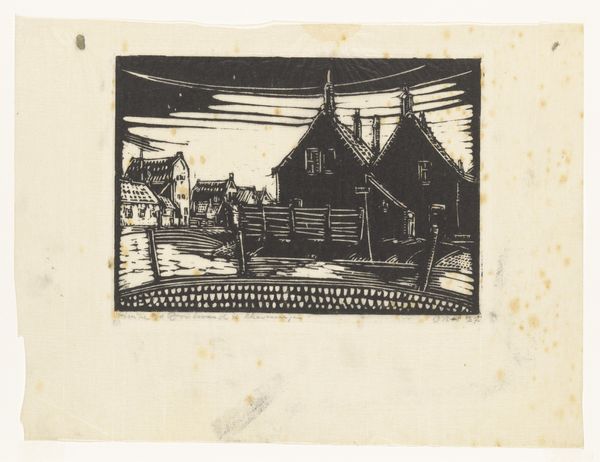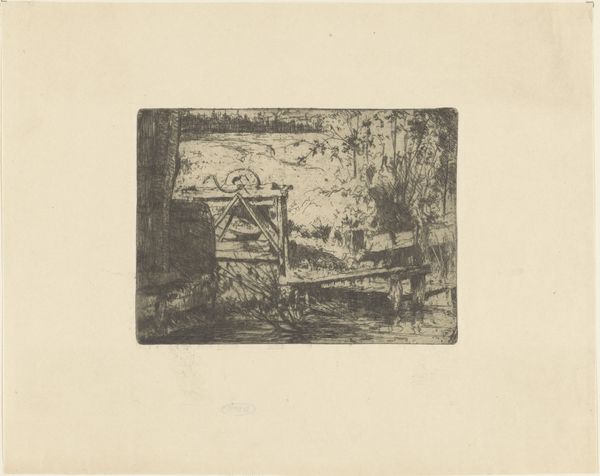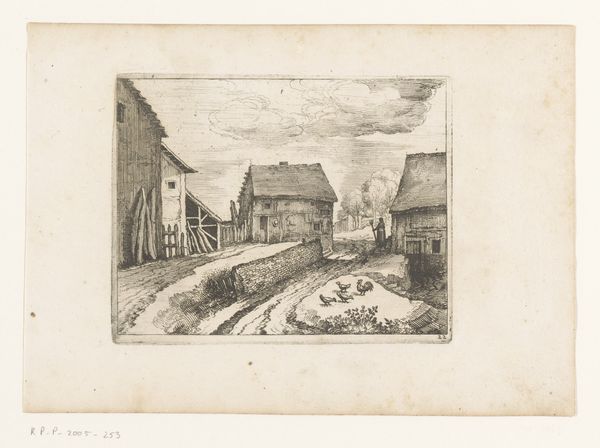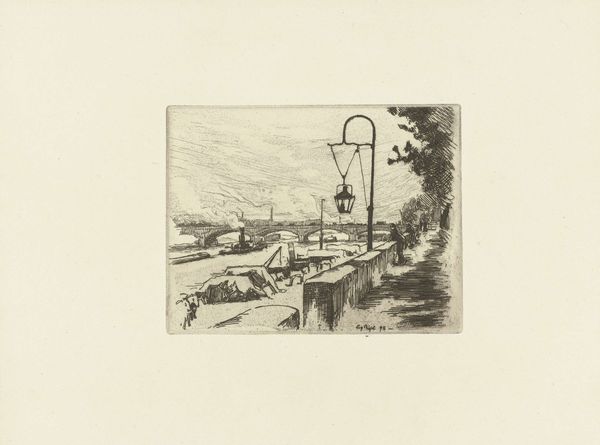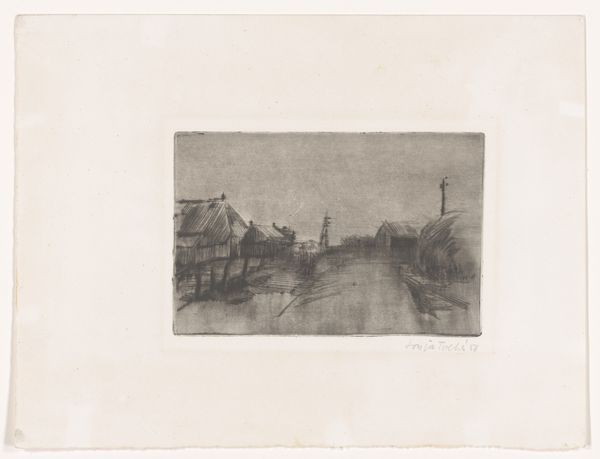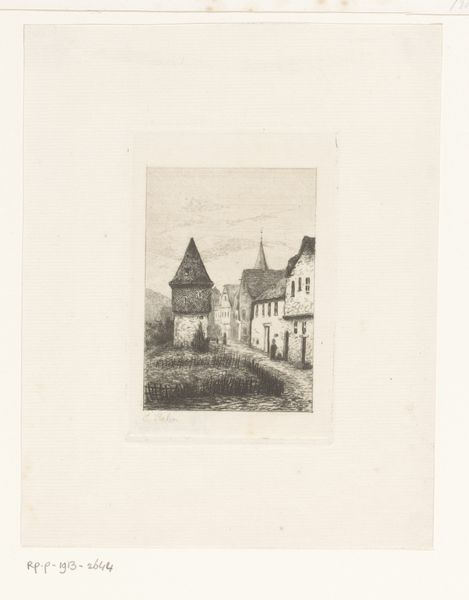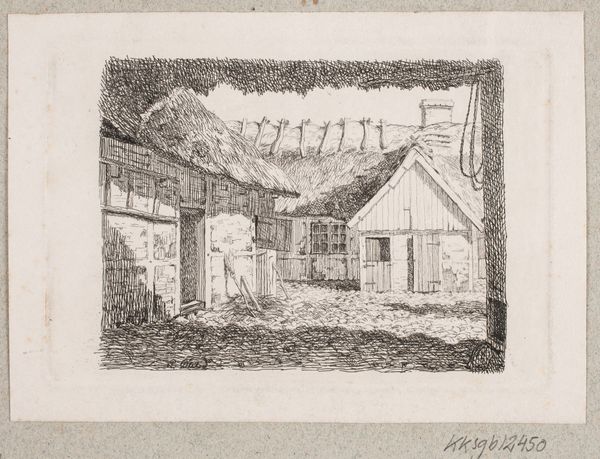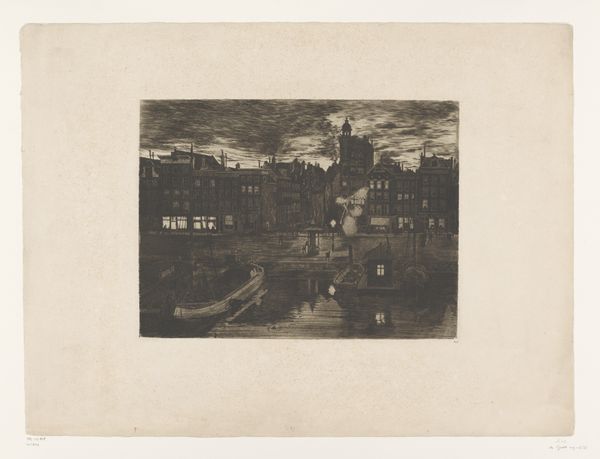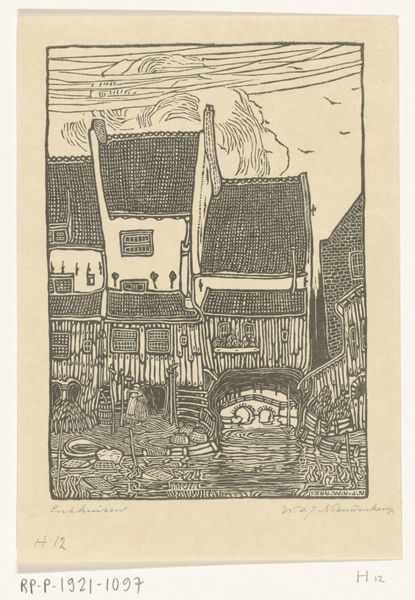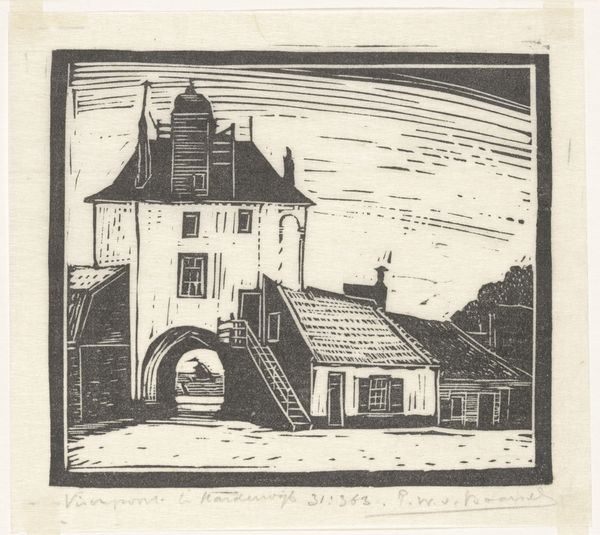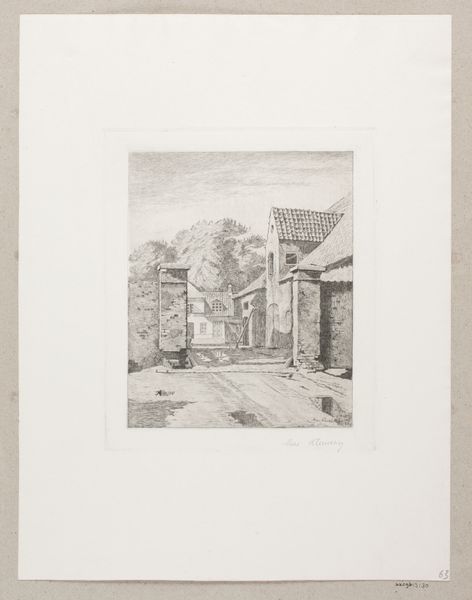
drawing, print, etching
#
drawing
# print
#
etching
#
landscape
#
northern-renaissance
#
realism
Dimensions: height 175 mm, width 245 mm, height 310 mm, width 495 mm
Copyright: Rijks Museum: Open Domain
Curator: Here we have Jo Bezaan's 1949 etching and drawing, titled "Harderwijk", now residing here at the Rijksmuseum. Editor: It's quite striking! Immediately, I'm drawn to the stillness, a kind of quiet tension in the composition. The somber tones emphasize this, as if the artist is hinting at an untold story. Curator: It is evocative, isn't it? Bezaan's choice of the etching technique, and printing it as a drawing aligns "Harderwijk" to Northern Renaissance landscape traditions while simultaneously utilizing post-war realism and sentimentality. It certainly speaks to the cultural memory and even trauma many felt after the war. Editor: Absolutely. The twin pillars in the foreground, each topped with a decorative finial that resembles funerary urns, creates a sense of entrance or perhaps a threshold. They're not exactly welcoming, however. What's intriguing to me is how the space between them frames a woman standing further down the road. Curator: The image asks: is she walking away or towards the viewer? It’s not overtly symbolic, and it avoids heavy-handed narratives. And considering the political and artistic climate of post-war Europe, where artists grappled with representing the unrepresentable—the recent, unspeakable trauma of war and all the rest—Bezaan carves out her space without relying on didactic representation or sentimentality. Editor: Precisely! It leaves the interpretation open, yet hints at a deeper emotional resonance through the careful rendering of light and shadow, the almost haunting symmetry, and that lone figure seemingly caught in time. What does it reveal or conceal? This etching serves less as a depiction, and more as a mirror. Curator: And in this way, she also allows room for people, communities, and, really, countries as well, to slowly rebuild their worlds, both personally and on a wider geopolitical stage. The imagery's ability to simultaneously evoke feelings of both personal introspection as well as collective action really emphasizes that sentiment, even today. Editor: Indeed. "Harderwijk" is a hauntingly beautiful print that subtly compels us to reflect on history, memory, and our shared humanity.
Comments
No comments
Be the first to comment and join the conversation on the ultimate creative platform.
